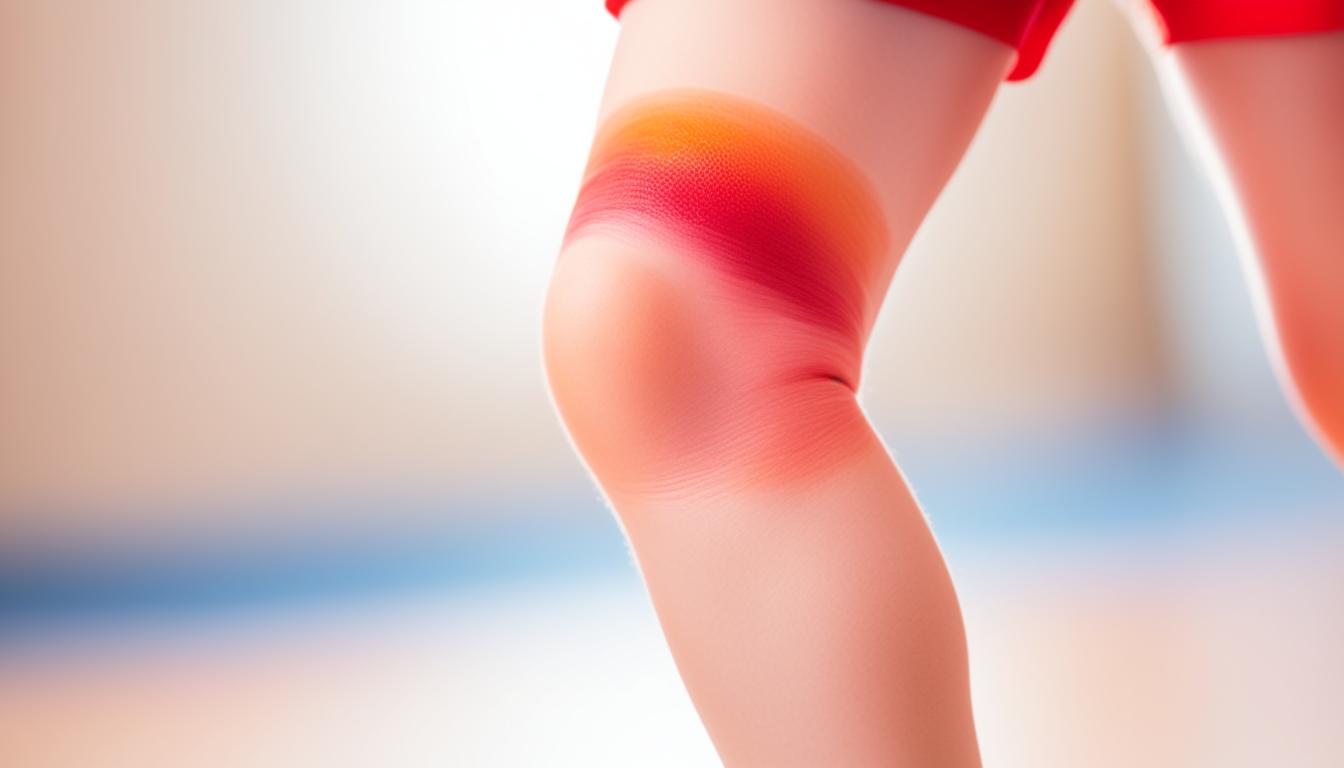According to a recent study in Headache, growing pains seem connected to migraine in kids and teens. The research showed that lower limb pain was strongly tied to migraine. This indicates that if a child has growing pains, they might also be at risk for migraine.
The study also found something interesting. Even kids who never had growing pains before might get them later. The scientists think that growing pains in children could be a sign or share a connection with migraine attacks.
Key Takeaways:
- Growing pains in children and adolescents may be linked to migraine.
- Presence of growing pains may indicate a risk of migraine.
- Even previously asymptomatic individuals can experience growing pains.
- Growing pains in children may be a precursor or comorbidity with migraine.
Symptoms and Causes of Growing Pains
Many kids feel growing pains, which can worry parents. Knowing the symptoms and causes helps ease concerns and care for your child better.
Symptoms of Growing Pains
Pain in the lower limbs, especially the lower legs, is a main symptom. It often happens at night. Note:
The pain might come and go or stay there all the time. There’s usually no fever, redness, swelling, or limp from these pains. Kids also don’t find it hard to walk during the day. The pain often gets better when they play or stay busy but worsens when they rest or do less active things in the evening.
Causes of Growing Pains
The exact cause of growing pains isn’t fully known. But, some think these pains could be from:
- Quick bone and muscle growth
- Too much exercise or sports
- Tired muscles from not resting enough
- Genes might make some kids more likely to have these pains
- Feeling stressed or upset could also play a role
It’s key to remember that growing pains are usually not a sign of something serious. But if you’re worried, or if the pains get worse, it’s good to see a doctor for advice.
Diagnosis and Stem Cell Therapy for Growing Pains
Finding out if a child has growing pains is not easy. Doctors do many tests to make sure the pain is not from something else. They start with a check-up and look at the child’s health. They also do tests like blood work to check for illness. X-rays might be done to see if there are any bone problems.
When everything else is ruled out, and the pain acts like growing pains, then it’s confirmed. It’s key to know that growing pains are not harmful in the long run. Though they can hurt, they won’t affect a child’s health as they grow.
Treating growing pains often includes simple steps. Things like using hot or cold on the sore spot can help. They might also suggest gentle massages or over-the-counter pain pills. Stretching is also a good idea. It can make muscles less tight and reduce the pain. A doctor or physical therapist should show how to do the stretches right.
Stem cell therapy is a new way to treat some diseases. But, it’s not a common treatment for growing pains yet. There’s not enough proof that it works well for this. Even so, research is ongoing. It may show us how stem cells could help with growing pains someday.

